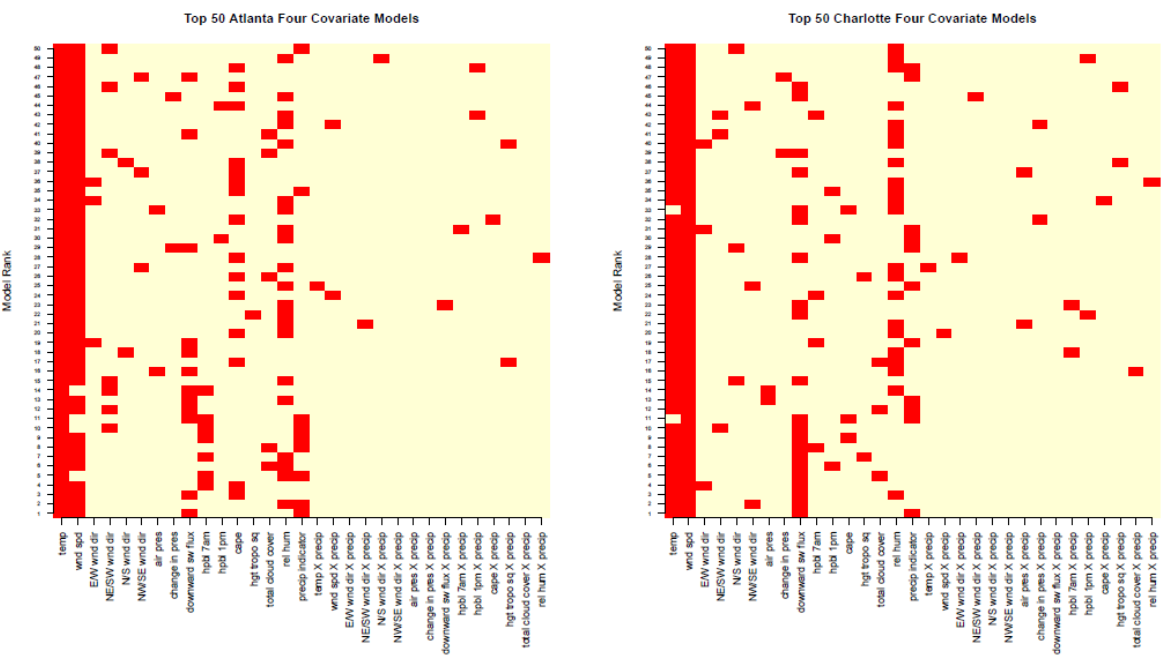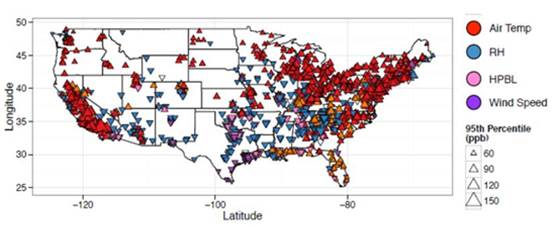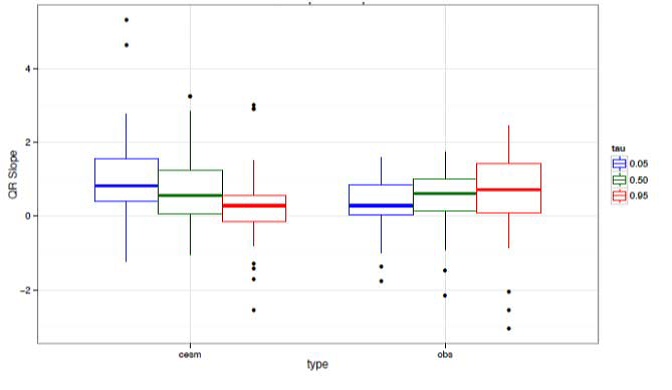Grantee Research Project Results
2013 Progress Report: Using Advanced Statistical Techniques to Identify the Drivers and Occurrence of Historical and Future Extreme Air Quality Events in the United States from Observations and Models
EPA Grant Number: R835228Title: Using Advanced Statistical Techniques to Identify the Drivers and Occurrence of Historical and Future Extreme Air Quality Events in the United States from Observations and Models
Investigators: Heald, Colette L. , Reich, Brian , Cooley, Dan , Hodzic, Alma , Gilleland, Eric , Brown, Barbara G
Current Investigators: Heald, Colette L. , Hodzic, Alma , Reich, Brian , Cooley, Dan
Institution: Massachusetts Institute of Technology , Colorado State University , National Center for Atmospheric Research , North Carolina State University
EPA Project Officer: Chung, Serena
Project Period: June 1, 2012 through May 31, 2015 (Extended to May 31, 2016)
Project Period Covered by this Report: June 1, 2013 through May 31,2014
Project Amount: $749,931
RFA: Extreme Event Impacts on Air Quality and Water Quality with a Changing Global Climate (2011) RFA Text | Recipients Lists
Research Category: Air Quality and Air Toxics , Climate Change , Watersheds , Air , Water
Objective:
This second year of the project has focused on the application and further development of statistical methods initially investigated in Year 1. The extreme value theory methodology for air quality extremes developed by co-PI Dan Cooley’s group at CSU was finalized and applied to two case study cities in the United States. A manuscript describing these results was submitted, and the Cooley group now is exploring an expanded analysis based on this approach. The NCSU team led by Brian Reich has been working on spatial interpolation approaches for air quality extremes. The MIT team led by Colette Heald has been developing quantile regression approaches to compare air quality extremes in observations and models. This approach has been refined and applied to the ozone observational record in the United States and the global CESM climate model predictions for present-day. A manuscript describing these results is in preparation.
Progress Summary:



Future Activities:
References:
Jacob DJ, Winner DA. Effect of climate change on air quality. Atmospheric Environment 2009;43(1):51-63, doi:10.1016/j.atmosenv.2008.09.051.
Journal Articles on this Report : 5 Displayed | Download in RIS Format
| Other project views: | All 38 publications | 12 publications in selected types | All 12 journal articles |
|---|
| Type | Citation | ||
|---|---|---|---|
|
|
Reich BJ, Shaby BA. A hierarchical max-stable spatial model for extreme precipitation. Annals of Applied Statistics 2012;6(4):1430-1451. |
R835228 (2013) R835228 (2014) R835228 (Final) |
Exit Exit Exit |
|
|
Reich BJ, Chang HH, Foley KM. A spectral method for spatial downscaling. Biometrics 2014;70(4):932-942. |
R835228 (2013) R835228 (2014) R835228 (Final) R834799 (2014) R834799 (2015) R834799 (2016) R834799 (Final) |
Exit Exit Exit |
|
|
Reich B, Cooley D, Foley K, Napelenok S, Shaby B. Extreme value analysis for evaluating ozone control strategies. Annals of Applied Statistics 2013;7(2):739-762. |
R835228 (2012) R835228 (2013) R835228 (2014) R835228 (Final) |
Exit Exit Exit |
|
|
Russell BT, Cooley DS, Porter WC, Reich BJ, Heald CL. Data mining to investigate the meteorological drivers for extreme ground level ozone events. Annals of Applied Statistics 2016;10(3):1673-1698. |
R835228 (2013) R835228 (Final) |
Exit Exit Exit |
|
|
Sun W, Reich BJ, Cai TT, Guindani M, Schwartzman A. False discovery control in large-scale spatial multiple testing. Journal of the Royal Statistical Society: Series B, Statistical Methodology 2015;77(1):59-83. |
R835228 (2013) R835228 (2014) R835228 (Final) |
Exit Exit |
Supplemental Keywords:
ozone, particulate matter, extreme value analysis, quantile regression, air quality, CESMProgress and Final Reports:
Original AbstractThe perspectives, information and conclusions conveyed in research project abstracts, progress reports, final reports, journal abstracts and journal publications convey the viewpoints of the principal investigator and may not represent the views and policies of ORD and EPA. Conclusions drawn by the principal investigators have not been reviewed by the Agency.
